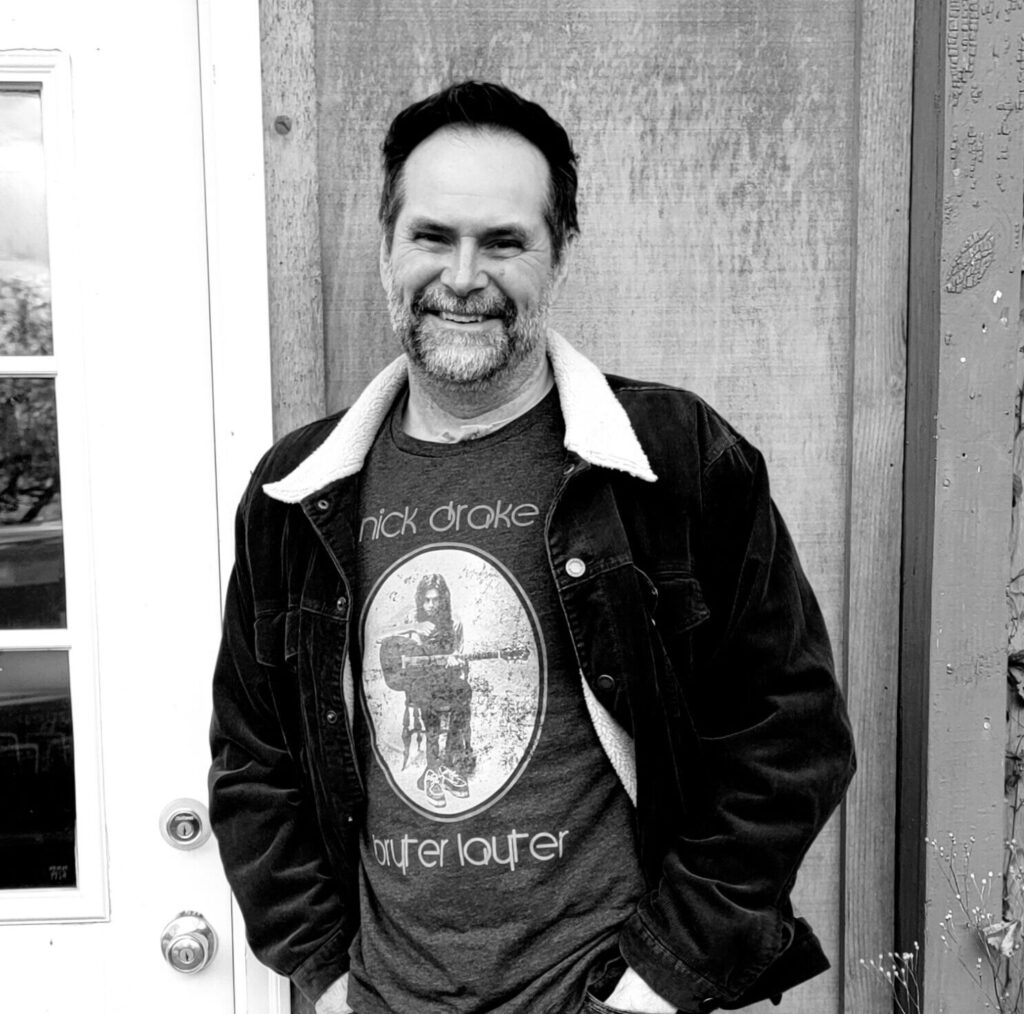
By Edward Karshner
During my 2022 summer fellowship at Berea College Special Collections and Archives, I nerded out over many variants of familiar folktales. I love the idea that stories and traditions continue to evolve, grow, change. One story, however, was new to me. It has haunted me ever since I read it. It’s a “tall tale” collected by Leonard Roberts in 1970. The gist of the story is that a man, who’s committed an “awful crime,” is exiled to the “Green-Land.” Out of loneliness, he becomes involved with the woman who brings him food. They have a child. After two years, he is allowed to go home, but is told he can only take what he came with. So, choosing to leave his new family behind, the man starts home alone. The woman, in reaction, pulls the child apart and says: “Here, take your half with you.”
It’s a story so bizarre, so unexpectedly brutal that I immediately thought of Aristotle and his definition of tragedy as a negotiation between the familiar and the absurd. That writing emerges from an attempt to harmonize our external experiences with our internal feelings about those experiences. Stories, telling and hearing, often draw out of us the things we don’t want to think about.
For me, this story touches on the idea of exile, of a longing for home. The desire to go back. Despite the man having created something beautiful in the Green-Land, when he is given the opportunity to return to that past home, “he hated to leave his beautiful little boy, but his desire for home was greater.” Nostalgia is an unsoothable want for the past that robs us of the possibility for a future. “Green-Land” narrates the reality that true return is impossible because in time, we change and the places we long for change. The past is a memory made. The future is a wish. All we really have is now and it is fleeting as it slips into our yesterdays. Folklore and literature, then, become a means to untangle our tentative place in the flow of time, a meditation, in story, on our experiences in the ever-turning wheel of time and place.
My columns in Reckon Review have been my attempt to untangle my understanding of where I am in time and place. As my friend Neema Avashia put it: the musings of middle age. As I’ve worked my day job writing about the confluence of folklore and literature, I’ve thought about my own dabbling in fiction writing. My stories take place in the Salt Creek Valley, particularly the area in and around Tar Hollow that winds itself in and out of Ross and Hocking County, Ohio. Living just west of Cleveland, now, I feel like a stranger in a strange land. I write about home from Off because it makes me happy. I can exorcise my homesickness by writing myself home. I can make sense of my place, here, by thinking about it from the experience of home.
I’m currently working on a novel I started during lockdown. I couldn’t go home and I was stuck in a place I’ve never felt comfortable. So, I created a Southeastern Ohio town called Mount Tabor and filled it with the people I missed most. It started as a way to be home. As I’ve revised, I’ve come to realize that Mount Tabor, while supposed to be Appalachia Ohio, is really where I live now, right down to the center town square. That some of the characters aren’t from home, but from here, too. In time, I realized that Mount Tabor is, also, Chillicothe from the late 70s, early 80s. My childhood. The time when my grandma was still alive, and a Saturday would be spent walking downtown or at the Ross County Historical Society. Through fiction, I’m making sense of my place in time by looking back to see ahead.
I’ve learned that writing about place is more complicated than depicting it as an “is/isn’t.” Stories aren’t road maps or clocks. Instead, we tell stories to harmonize ourselves with the flow of our personal when and where. Rick Rubin, in his book The Creative Act, calls this the “great paradox.” The art of self-expression really isn’t about us; rather, art is sharing our filters with others so they can experience that expression through their filters. A process he characterizes as “continuous and ongoing. Taken all together, it creates what we experience as reality.”
As writers, we should consider those filters an invitation for readers to consider reality as something created. That’s why it’s fiction. A story. A form contrived to imitate where we’ve been, contextualized where we are, all the while looking forward to a future that will all too quickly tear through the present to reside in the past. As readers, we must be willing to explore the efforts of writers to make sense of the time and place they find themselves. Reading stories re-orient us to our possibilities inherent in time.
Whether writers or readers (and aren’t we all both?), we are somewhere we didn’t plan to be, in a time we didn’t choose. The art of reading and writing creates a personal sense of that experience. “Green-Land” reminds us that what we create along the way is as important as what we brought with us. As Henry Glassie puts it, art is the expression of tradition and tradition is a creation of the future out of the past. A continuity, a participation in our story where, if we aren’t looking ahead, we are merely attempting a return to the dead, irrelevant past. And if we aren’t willing to go on that journey forward, from where we are, with the people we find ourselves with, we might as well take our half with us.
Further Reading:
As I mention in my column, I first encountered “Green-Land” in the Leonard Roberts Archives (Box 27, Folder 15) at Berea College Special Collections and Archives. If you can’t make your way there to read the transcription, the story was recently published in Fairy Tales of Appalachia (University of Tennessee UP) edited by Stacy Sivinski. This is also a great volume if you are interested in Appalachian folklore.
If you would like to read further about the philosophy of Nostalgia, I highly recommend Mark Fisher’s Ghosts of my Life. His ideas about being “haunted” by history (especially personal history) are definitely thought provoking.
One my all-time favorite folklorists is Henry Glassie. I highly recommend his essay “Tradition” in Eight Words for the Study of Expressive Culture (University of Illinois Press). He completely dismantles the concept of tradition/traditional as something static and fixed. His idea that tradition is making the future out of the past is a nice compliment to Fisher’s work.

Edward Karshner
Edward Karshner was born in Ross County, Ohio and grew up in the Salt Creek Valley of Southeast Appalachia Ohio which draws together Ross, Hocking, and Pickaway Counties. After earning a Ph.D. in Rhetoric and Philosophy from Bowling Green State University, he began to explore cultural rhetoric as expressed in folklore. His primary interest was how landscape influences folk-ideologies. In the early part of his career, he travelled extensively in China, Slovakia, Austria, and the Czech Republic before spending over a decade working with the Dinè(Navajo). Now, as a Professor of English at Robert Morris University, he has returned to researching, teaching and writing about Appalachian folklore, magic, and mysticism. A 2022 Research Fellow in Folklore at Berea College’s Special Collections and Archives, Karshner is the author of “These Stories Sustain Me” in the collection Appalachian Reckoning: A Region Replies to Hillbilly Elegy. His short fiction has appeared in numerous anthologies and in Still: The Journal.
